Perovskite LEDs are an emerging technology for next-generation display, lighting and communications. While perovskite LEDs can be produced simply at low cost, they show clear technological advantages. They offer the light weight and flexibility comparable to OLEDs, and color purity and tunability similar to LEDs based on III-V semiconductors. With only a few years of research by scientists around the world, the efficiency of perovskite LEDs already rivals the more mature technologies.
However, similar to perovskite solar cells, the poor device stability of perovskite LEDs stands as the grandest challenge toward commercial applications. Typical lifespans of perovskite LEDs are on the order of 10-100 hours. In contrast, the minimum lifetime required for an OLED display is 10000 hours. Researchers were facing great difficulties, as halide perovskite semiconductors might be intrinsically unstable due to the ionic nature of their crystal structures - the ions can move around when voltages are applied to the LEDs, leading to material degradation.
Recently, a research group led by Prof. DI Dawei and Prof. ZHAO Baodan at the College of Optical Science and Engineering of Zhejiang University made an important breakthrough in this area. They discovered that by using a dipolar molecular stabilizer, it is possible to make efficient and stable perovskite LEDs with ultralong lifetimes satisfying the demands of commercial applications. The research was carried out in collaboration with the research groups of Prof. LI Cheng at Xiamen University, Prof. HONG Zijian at Zhejiang University, and Prof. LI Weiwei at NUAA and formerly at Cambridge University. A paper entitled "Ultrastable near-infrared perovskite light-emitting diodes" was published by the researchers recently (on 8 August 2022) in Nature Photonics (Guo et al, Nat. Photon. (2022), doi:10.1038/s41566-022-01046-3).
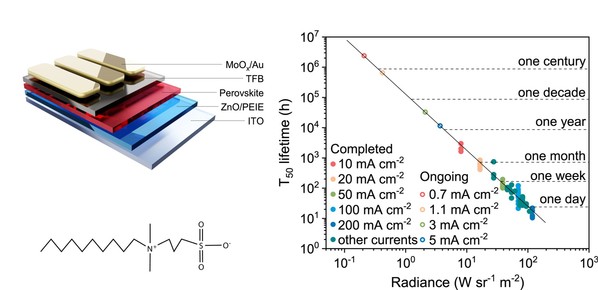
Figure 1: Structure of the perovskite LED (upper left panel); structure of the dipolar molecular stabilizer, SFB10 (lower left panel); device T50 lifetimes versus the optical power output (radiance) of the perovskite LEDs (right panel). Source: Nature Photonics (2022).
"Our stabilized perovskite LEDs showed no performance degradation over 5 months (3600 hours) of continuous operation under a current of 5 mA/cm2. Some of the measurements are still ongoing", said Di, corresponding author of the paper. "This is really exciting, and is completely beyond expectation. The devices are very stable and some ongoing measurements are unlikely to finish in a year or even longer. To be able to obtain the lifetime data within a reasonable timeframe, we need to use accelerated aging tests widely employed for LEDs", said Di.
The near-infrared perovskite LEDs show extraordinary lifetimes. For example, the estimated T50 lifetime (time required for the initial radiance to drop to 50%) is 32675 hours (3.7 years) at an initial radiance of 2.1 W sr-1 m-2 (3.2 mA/cm2). This radiance is about the same optical power for a commercial green OLED working at a high brightness of 1000 cd/m2. At a low initial radiance of 0.21 W sr-1 m-2 (one tenth of the above brightness setting) or 0.7 mA/cm2, the forecasted T50 lifetime is 2.4 million hours (2.7 centuries).
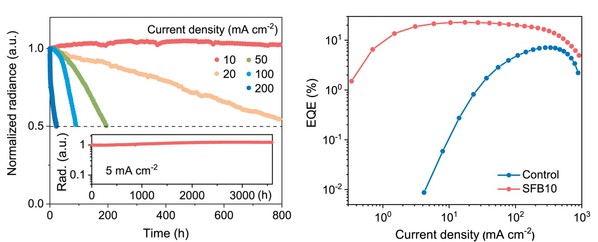
Figure 2: Long-term operation and accelerated aging experiments of the perovskite LEDs (left panel); external quantum efficiency data of the stabilized and untreated devices (right panel). Source: NaturePhotonics (2022).
GUO Bingbing, a postgraduate student at Zhejiang University and the first author of the paper, said: "We believe it is important to carry out robust lifetime analyses for the new class of LEDs using as many data points as possible. To achieve this goal, we collected 62 data points from accelerated aging experiments across a broad current density range of 10-200 mA/cm2". The peak external quantum efficiency and energy conversion efficiency of the devices reached 22.8% and 20.7%, respectively. These are the highest efficiency values for near-infrared perovskite LEDs.
The researchers found that the stabilized perovskite materials hold their crystal structures very well over time. "The crystal structures did not change for more than 322 days", said Zhao, a corresponding author of the paper. "This means that the dipolar molecular stabilizer helps the perovskite to retain its original, optoelectronically active crystal phase. In contrast, the untreated perovskite samples changed their crystal structures and decomposed in about two weeks", said Zhao.
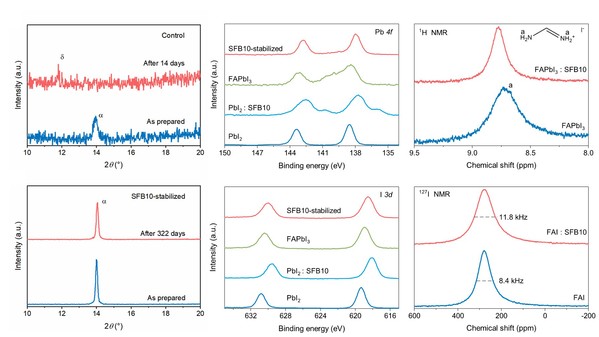
Figure 3: Structural and chemical analyses of the perovskite samples. Source: Nature Photonics (2022).
The movement of ions in the perovskite materials is a source of instability. Such problem gets much worse under external voltages during LED operation. "Our experiments and calculations showed that the dipolar molecules chemically bond or interact with all positive and negative ions at the perovskite crystal grain boundaries", said Guo, "and this may be the reason why ion migration becomes more difficult in the stabilized perovskite". "The suppression of ionic movement may be seen from the electrical and optical measurements we and our collaborators performed", Zhao commented.
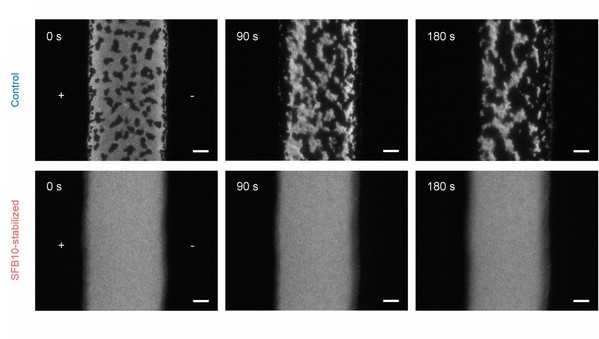
Figure 4: Microscopic luminescence imaging experiments showing the effects of ion migration in perovskite samples under electric fields. Source: Nature Photonics (2022).
The lifetime results suggest that perovskite devices are not "genetically flawed" in terms of stability. "Metal halide perovskites, as an emerging class of semiconductors, were widely believed to be intrinsically unstable, particularly in LED applications where high electric fields are present", said Di, "our results show that making stable perovskite devices is not 'mission impossible'."
The ultralong lifespans are expected to boost confidence in the field of perovskite LEDs, as they now satisfy the stability requirement for commercial OLEDs. The near-infrared LEDs can be useful in infrared display, communications and biological applications. While further efforts are needed in developing visible devices with similar longevity for full-color displays, the demonstration of ultrastable perovskite LEDs has paved the path toward industrial applications.
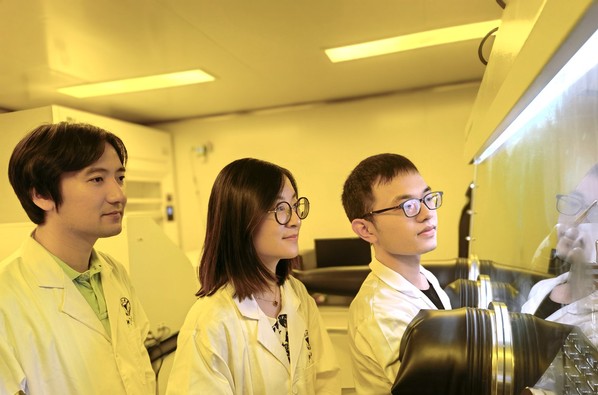
Photo: Researchers measuring perovskite LEDs in the lab. [from left to right] Prof. DI Dawei, Prof. ZHAO Baodan, and GUO Bingbing.
Related paper:
Guo, B. et al.Ultrastable near-infrared perovskite light-emitting diodes. Nature Photonics (2022). https://www.nature.com/articles/s41566-022-01046-3
Source: The research team led by Prof. DI Dawei and Prof. ZHAO Baodan.






